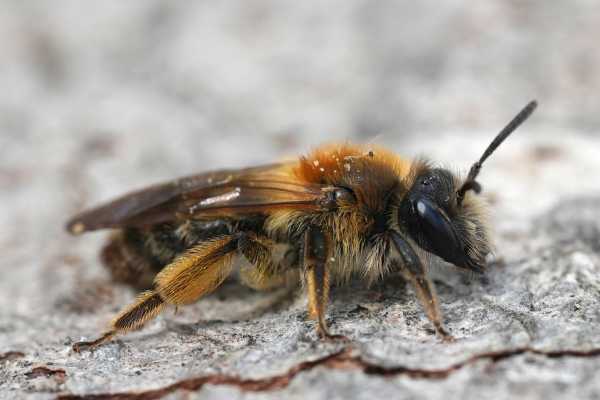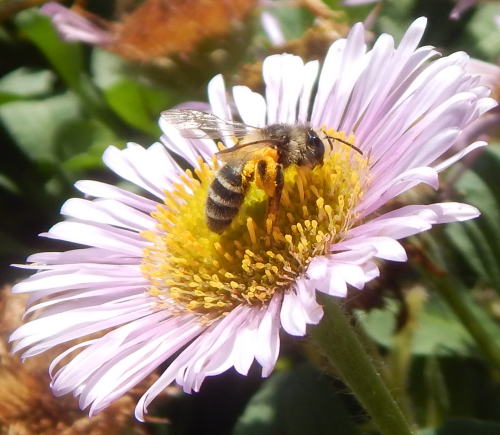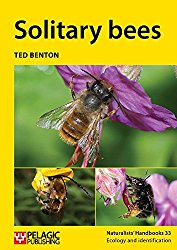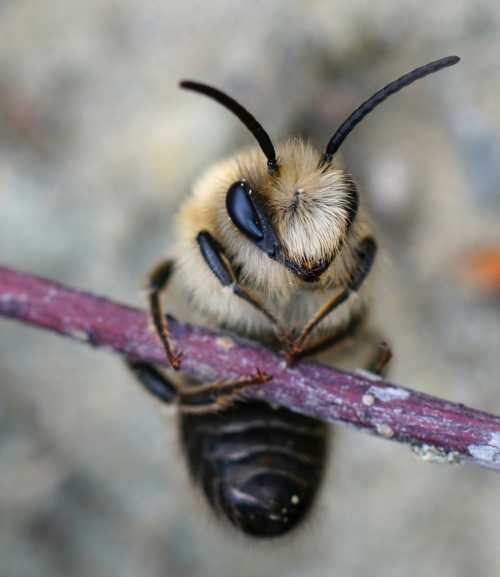Groove-faced mining bee - Andrena angustior
Falk notes these bees are typically seen nesting in loose aggregations along sandy paths in south-facing slopes and banks.
He also notes a variety of habitats, that includes coastal grassland, soft rock, cliffs, moorland edge and occasionally brownfield sites as well as open heathy woodland.
Groove-faced mining bee: Intoduction
Fortunately, I live close to the perfect habitat for Andrena augustior with both coastal habitat and brownfield sites and wooded, scrub land. The sunny bank is south facing.
 Female Groove-faced mining bee
Female Groove-faced mining beeGroove-faced mining bees are active from mid-April to late July. Note the relatively long antennae and tufty pale hair around the thorax of this female.
Groove-faced mining bee foraging
Locally, where I find this species, the sunny bank is abundant with bramble and hawthorn hedgerow, and rich with a variety of wildflowers, from umbellifers, daisies, and dandelions to vetches and green alkanet as well as oil oil seed rape that has seeded along the way.
Clearly, there are plenty of flowers for Andrena augustior to forage upon, as well as bare patches of dry, sandy soil for nesting.
Predators and parasites
Falk lists Nomada fabricana as being a cleptoparasite of this species. I didn't see this particular Nomada, although I did see other nomad bees around.
However, there may have been other potential hosts. Still, I am open minded that Andrena augustior could be a target for more than one nomad bee species.
If you found this page helpful or interesting, I'd really be grateful if you would share it with others - if not this page, perhaps another, such as Gardening For Bees.
Thank you so much :) .


